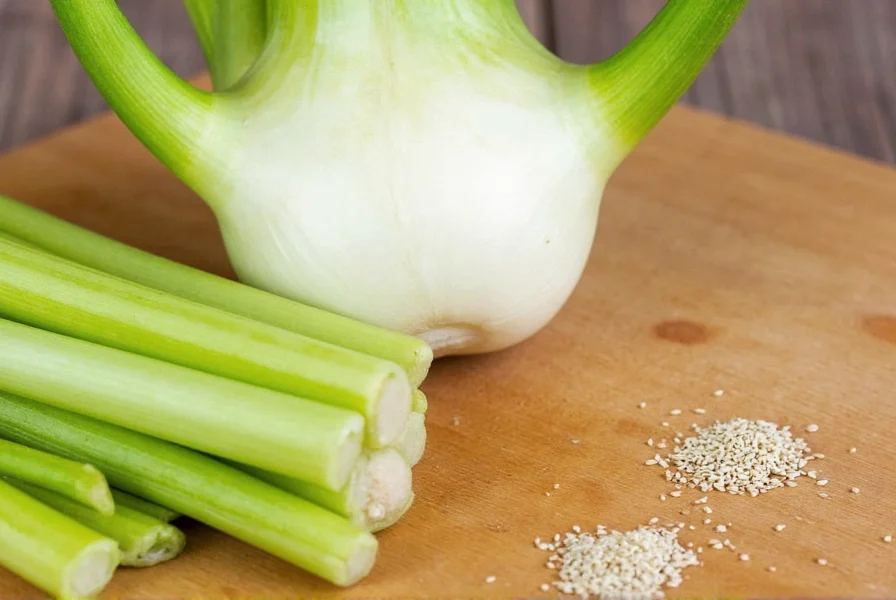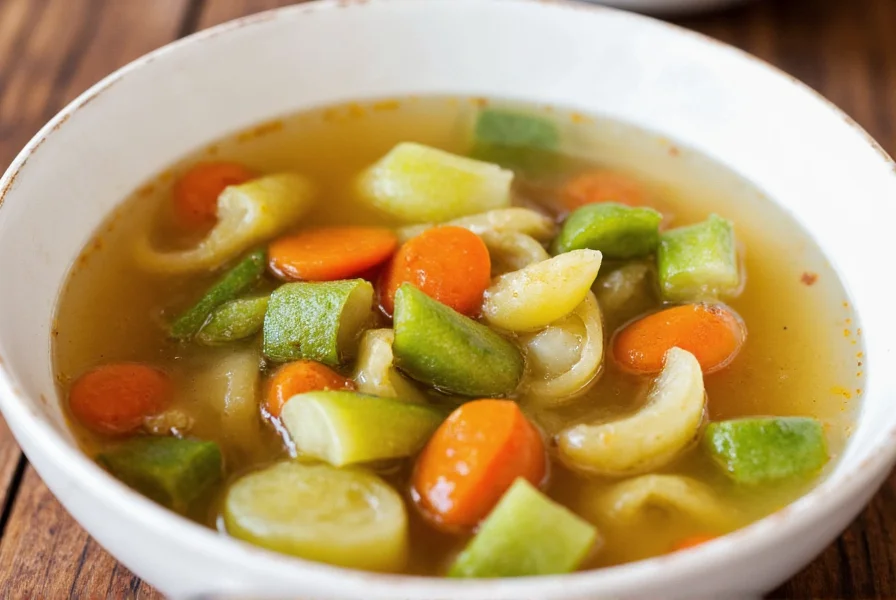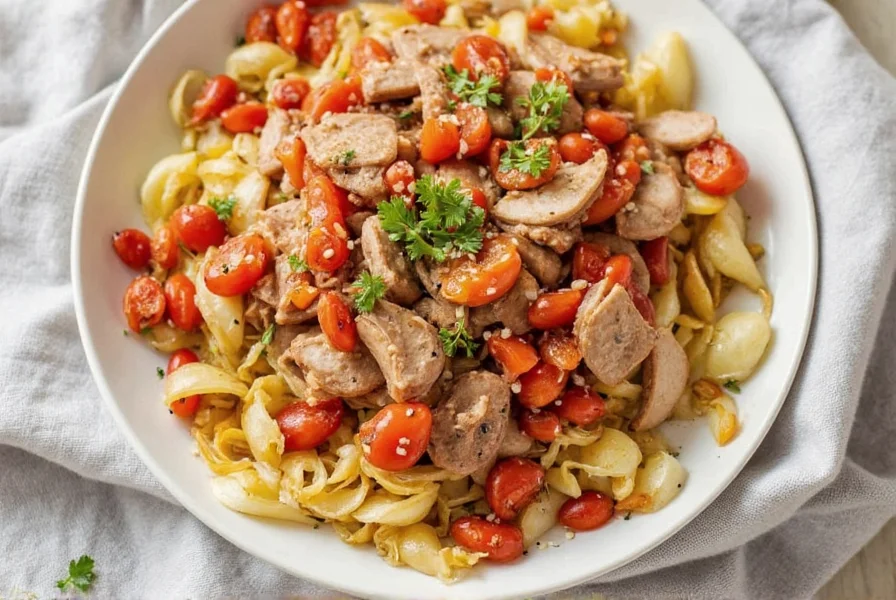Fennel, with its distinctive anise-like flavor and crisp texture, often leaves home cooks wondering what to use when this specialty ingredient isn't available. Understanding proper fennel subs is essential for maintaining recipe integrity whether you're preparing Mediterranean dishes, soups, salads, or roasted vegetable medleys. The right substitution preserves both flavor profile and textural elements that make fennel valuable in culinary applications.
Understanding Fennel's Culinary Properties
Fennel consists of three main components used differently in cooking: the bulb, stalks, and seeds. Each part offers unique characteristics that determine appropriate substitutions:
- Bulb - Crisp, juicy texture with mild anise flavor, excellent raw or cooked
- Stalks - More fibrous with concentrated flavor, often used like celery
- Seeds - Intensely aromatic, used as spice in baking and sausage making
When seeking fennel subs, consider which property matters most for your specific recipe—flavor, texture, or both. This distinction separates effective substitutions from disappointing recipe failures.
Best Substitutes for Fennel Bulb
The fennel bulb's unique combination of crunch and subtle licorice notes makes it challenging to replace perfectly. However, several vegetables work well depending on your cooking method:
| Substitute | Best For | Adjustment Tips |
|---|---|---|
| Celery | Soups, stews, mirepoix | Add pinch of茴香 seeds for flavor approximation |
| Endive | Salads, raw preparations | Use slightly less due to more bitter profile |
| Leeks | Sauteed dishes, gratins | Use white parts only, slice thinly |
| Onion +茴香 seeds | Cooked applications | 1 tsp seeds per medium onion |
Celery remains the most accessible fennel bulb alternative, providing similar crunch with about 70% of fennel's flavor profile. For raw applications like salads, endive offers comparable bitterness without overwhelming anise notes. When substituting in cooked dishes, leeks provide excellent texture replacement with milder flavor that won't dominate other ingredients.

Fennel Stalk and Seed Substitutions
Fennel stalks function similarly to celery in stocks and braises but with distinctive flavor. For most savory applications, celery provides the closest textural match. When flavor matters more than texture, add 1/4 teaspoon of ground茴香 seeds per stalk replaced.
Fennel seeds have no perfect substitute due to their unique aromatic profile, but these alternatives work in various contexts:
- Anise seeds - Nearly identical flavor but stronger (use 3/4 amount)
- Dill seeds - Similar appearance with different flavor (good for pickling)
- Caraway seeds - Earthier profile (works in rye bread applications)
- Star anise - Whole spice for braises (use 1 star per teaspoon fennel seeds)
Professional chefs often create custom spice blends when exact fennel seed replacement isn't possible. A common ratio combines 2 parts coriander, 1 part anise, and 1/2 part caraway to approximate fennel seed's complex flavor profile in sausage recipes.
Recipe-Specific Substitution Guidance
Not all fennel subs work equally well across different dishes. Consider these application-specific recommendations:
For Salads and Raw Preparations
When replacing raw fennel in salads, maintain crisp texture while managing flavor intensity. Thinly sliced celery hearts with a squeeze of orange juice provides similar crunch with complementary citrus notes that mimic fennel's brightness. For shaved fennel salads, jicama offers comparable texture with neutral flavor that won't overpower delicate dressings.
In Soups and Stews
The aromatic qualities of fennel shine in liquid-based dishes. Replace fennel bulb in soups with equal parts leek and celery, adding one crushed fennel seed per cup of broth. For Italian sausage soup or cioppino, this combination preserves the essential flavor foundation without requiring specialty ingredients.

For Roasted Vegetable Medleys
When roasting, fennel caramelizes beautifully while maintaining structure. The best fennel subs here include parsnips (for similar sweetness) or radicchio (for complementary bitterness). Toss with olive oil and a pinch of ground茴香 seeds before roasting to approximate fennel's distinctive roasted flavor profile.
Common Substitution Mistakes to Avoid
Many home cooks make these errors when seeking fennel alternatives:
- Using anise extract instead of seeds (too concentrated)
- Substituting fresh dill for fennel bulb (completely different texture)
- Replacing fennel seeds with anise stars in ground spice applications
- Using too much substitute and overwhelming the dish
Remember that most fennel subs work best when they complement rather than perfectly replicate fennel's unique characteristics. Culinary creativity often produces better results than searching for an exact replacement.
Storage Considerations for Substitutes
Unlike fennel which keeps well for 2-3 weeks refrigerated, many substitutes have different storage requirements. Celery wrapped in foil lasts up to four weeks, while leeks should be used within 5-7 days. Keep your chosen fennel subs properly stored to maximize freshness and flavor impact in your dishes.
Conclusion: Mastering Fennel Substitutions
Successful fennel substitution requires understanding both the role fennel plays in your specific recipe and the properties of potential alternatives. By matching either flavor profile or textural qualities—and sometimes both—you can maintain recipe integrity even without this specialty ingredient. The most versatile fennel subs include celery for texture replacement and茴香 seeds for flavor replication, with adjustments based on your cooking application. With these guidelines, you'll never need to abandon a recipe due to unavailable fennel.
Frequently Asked Questions
Can I substitute dill for fennel in recipes?
Dill makes a poor direct substitute for fennel bulb due to completely different texture and flavor profile. However, dill seeds can work as a partial replacement for fennel seeds in pickling recipes, though the flavor will be noticeably different. For bulb replacement, celery remains superior to dill in most applications.
What's the best fennel substitute for making Italian sausage?
For Italian sausage recipes requiring fennel seeds, use a combination of anise seeds (3/4 amount) and coriander (1/4 amount). This blend approximates fennel's complex flavor profile better than any single substitute. Avoid using fresh fennel bulb in sausage making as it won't provide the necessary concentrated flavor.
How do I substitute fennel in a gratin recipe?
For gratins requiring fennel bulb, sliced leeks make the best substitute. Use the white and light green parts only, sliced paper-thin. Add 1/4 teaspoon of ground茴香 seeds per cup of leeks to approximate fennel's distinctive flavor. The leeks will caramelize similarly and absorb cream sauces effectively.
Can I use anise extract instead of fennel?
Anise extract works only as a fennel seed substitute in liquid applications like baking or braising, never for bulb replacement. Use just 1/8 teaspoon of extract per teaspoon of fennel seeds required, as it's highly concentrated. For most savory dishes, whole or ground茴香 seeds provide better flavor control than extract.
What vegetable has the closest texture to fennel bulb?
Celery hearts provide the closest texture match to fennel bulb, especially when used raw. The crisp, juicy consistency works well in salads and crudités. For cooked applications, parsnips offer similar density and caramelization properties when roasted or braised, though with different flavor characteristics.











 浙公网安备
33010002000092号
浙公网安备
33010002000092号 浙B2-20120091-4
浙B2-20120091-4